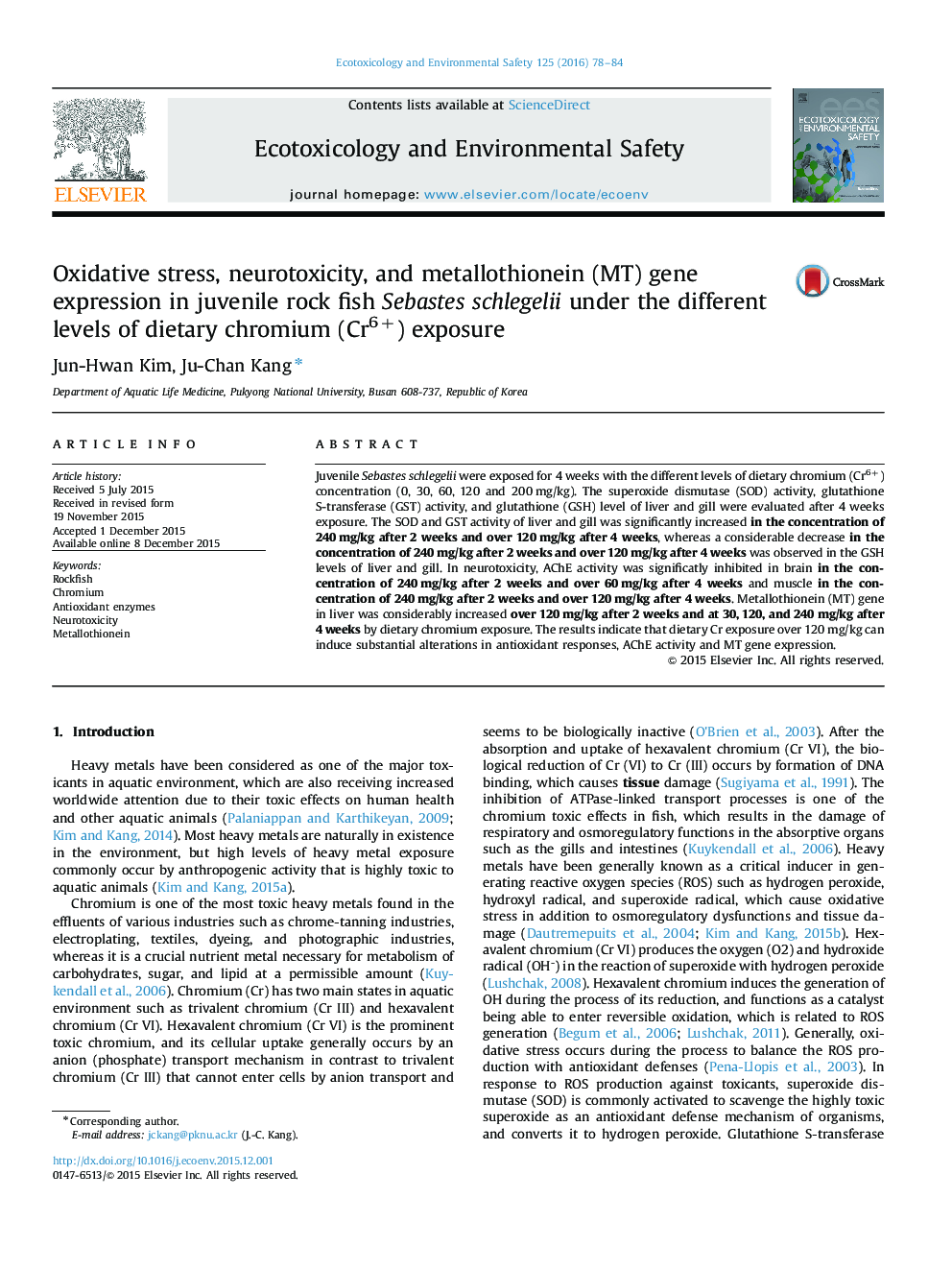| Article ID | Journal | Published Year | Pages | File Type |
|---|---|---|---|---|
| 4419433 | Ecotoxicology and Environmental Safety | 2016 | 7 Pages |
•The chromium exposure induced the significant alterations in antioxidant responses.•The AChE was considerably inhibited by the chromium exposure.•The MT gene expressionwas substantially caused by the chromium exposure.
Juvenile Sebastes schlegelii were exposed for 4 weeks with the different levels of dietary chromium (Cr6+) concentration (0, 30, 60, 120 and 200 mg/kg). The superoxide dismutase (SOD) activity, glutathione S-transferase (GST) activity, and glutathione (GSH) level of liver and gill were evaluated after 4 weeks exposure. The SOD and GST activity of liver and gill was significantly increased in the concentration of 240 mg/kg after 2 weeks and over 120 mg/kg after 4 weeks, whereas a considerable decrease in the concentration of 240 mg/kg after 2 weeks and over 120 mg/kg after 4 weeks was observed in the GSH levels of liver and gill. In neurotoxicity, AChE activity was significatly inhibited in brain in the concentration of 240 mg/kg after 2 weeks and over 60 mg/kg after 4 weeks and muscle in the concentration of 240 mg/kg after 2 weeks and over 120 mg/kg after 4 weeks. Metallothionein (MT) gene in liver was considerably increased over 120 mg/kg after 2 weeks and at 30, 120, and 240 mg/kg after 4 weeks by dietary chromium exposure. The results indicate that dietary Cr exposure over 120 mg/kg can induce substantial alterations in antioxidant responses, AChE activity and MT gene expression.
